Onions (Allium Cepa) Profile
Written by Iris
Aug 04 2021
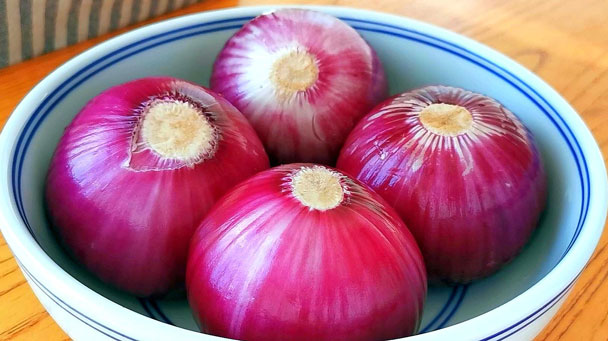
Onions (Allium cepa) and other members of the genus Allium are more widely used in dishes around the world. They are easy to grow, easy to store, good for you and delicious to eat. Originating in Asia and the Middle East, they have been cultivated for more than 5,000 years for food and medicine and include hundreds -some purely ornamental plants that stand out in our gardens, while others we use every single day in our kitchens.

The soil should be moist before sowing so check the soil the day before sowing and water if the soil is dry.
If planting onion sets then they can be planted around Mid to Late March (earlier if a cloche / polytunnel is used). Again space rows about 30cm apart. Sow sets around 10cm apart as they shouldn't require any thinning. Dig a small hole for each set and place the set in neck upwards. When covered back up with soil the tip of the neck should just show through the soil surface.
Spring onions (scallion) can be sown from April and planting should be staggered every few weeks to ensure a continuous crop throughout the growing season.
Before planting in spring, dig over the plot, clearing it of all weeds and stones. Tread down the soil and rake it to produce a level surface with a light, crumbly texture.
A couple of weeks before planting, rake in 35g/m2 of granulated fertiliser or 75g/m2 of dried chicken manure pellets. If you weren’t able to dig in compost or manure in autumn, then double the amount of fertiliser used.
Plant onion sets 20cm (8in) apart, with the tips just showing above the soil. Allow 30cm between rows.
Water in after planting – this helps to settle the soil around the bulbs.
Cover the area with netting to stop birds pulling up the young plants.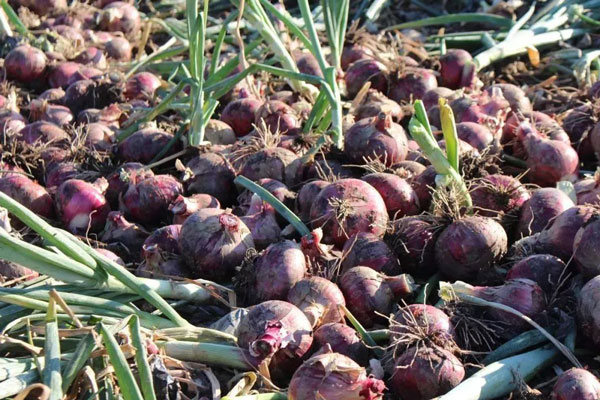
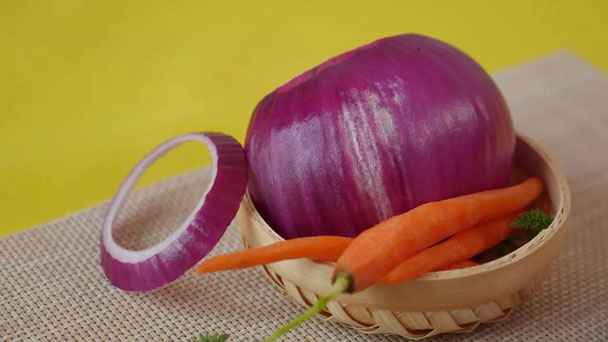
Hot varieties with more pungent flavors store better because they form a thicker leathery layer on the outside. Popular varieties include copra, Stuttgart and yellow ball. Store hot Onions at 40 to 50 degrees Fahrenheit in a dry, dark, well-ventilated basket or mesh bag, or weave stems and hang from rafters. To prepare for use, peel, chop and store in the fridge for up to a week or 10 to 12 months. Hot Onions can also be dried in a 155 ° F dehydrator for 8 to 10 hours (best done outdoors or in a garage because of the pungent smell) and stored in a can for one to two years, but the equipment can be expensive and require more time to process than other storage methods.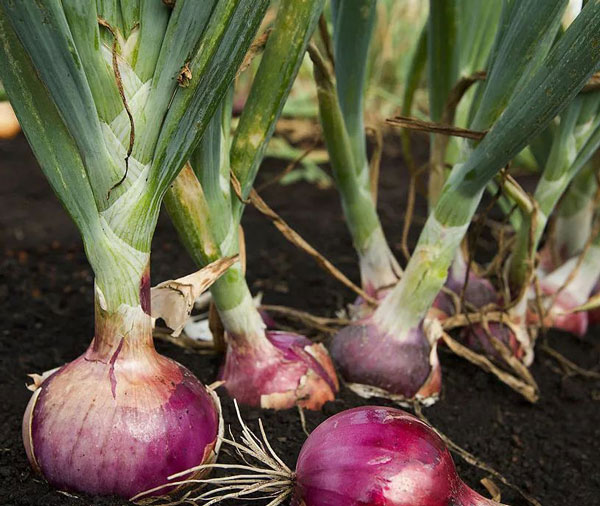
The juice of Onions is good for either scalding or burning by fire, water, or gunpowder, and used with vinegar, takes away all blemishes, spots, and marks in the skin: and dropped in the ears, eases the pains and noise of them. Applied with figs beaten together, helps to ripen and break imposthumes, and other sores.
Onions contain quercetin and other compounds thought to have anti-inflammatory, anti-cholesterol, and anti-cancer properties. Onions may be particularly healthy eating for menopausal women, as they destroy osteoclasts, which break down bone tissue. Shallots contain more phenols than onions, and have much stronger antioxidant properties. Generally speaking, the more pungent the onion, the healthier it is for your body.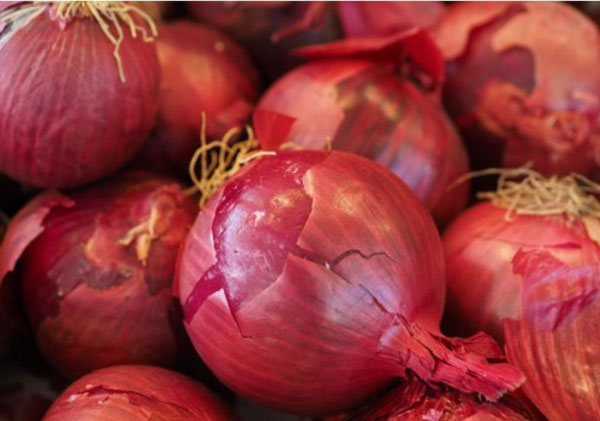
Short-day onions will begin forming bulbs when there are 10 to 12 hours of daylight each day. They work well in southern regions where summer daylight is comparatively short. Some common short-day onions include 'Southern Belle', 'White Bermuda', 'Granex', and 'Cipollini'.
Long-day onions begin forming bulbs when there are 14 to 16 hours of daylight per day. They are good for northern climates where the summer days are relatively long. Some recommended long-day onions include 'Walla Walla', 'Ring Master', 'Red Zeppelin', 'Yellow Sweet Spanish', 'Italian Red Torpedo', and 'Redwing'.
Day-neutral onions begin to form bulbs when they experience 12 to 14 hours of daylight each day. They are good for gardeners in the central U.S. Good varieties include 'Red Amposta', 'Early Yellow Globe', 'Cabernet', and 'Superstar'.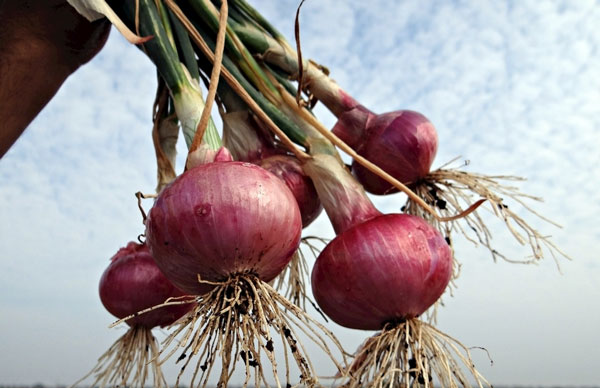
Onion PictureOnion InfoOnion HistoryHow to Grow and Care for OnionHow to Care for OnionHarvest OnionsStorage of OnionUses of OnionVarieties of Onion
Onion Picture

Onion Info
| Botanical Name | Allium cepa |
| Common Name | Onion |
| Plant Type | Biennial bulb, usually grown as an annual |
| Size | 12 to 18 in. tall; 6- to 12-in. spread |
| Sun Exposure | Full sun |
| Soil Type | Rich, well-drained |
| Soil pH | Slightly acidic to neutral (6.0 to 7.0 ) |
| Hardiness Zones | 5-10 (USDA); grown as an annual everywhere |
Onion History
Onions represent perhaps the most ancient of cultivated vegetables, dating back to the Bronze Age, as early as 5000 BC. Or, at least the archaeological evidence suggests that onions were eaten as food at that time. Cultivation may not have occurred until 3000 BC, in ancient Egypt. There, they were worshipped as symbols of eternal life — perhaps because of the round shape and concentric rings of the vegetable. Since onions were grown and used as a basis in nearly every global cuisine, the references to its uses are too numerous to name. It is recorded that Columbus introduced onions to the Americas in 1492 on his first voyage to Hispaniola. Long before this, they were cultivated across the Middle East, China, and South Asia.How to Grow and Care for Onion
How to Grow Onion
- With Seeds
The soil should be moist before sowing so check the soil the day before sowing and water if the soil is dry.
If planting onion sets then they can be planted around Mid to Late March (earlier if a cloche / polytunnel is used). Again space rows about 30cm apart. Sow sets around 10cm apart as they shouldn't require any thinning. Dig a small hole for each set and place the set in neck upwards. When covered back up with soil the tip of the neck should just show through the soil surface.
Spring onions (scallion) can be sown from April and planting should be staggered every few weeks to ensure a continuous crop throughout the growing season.
- With Offsets
Before planting in spring, dig over the plot, clearing it of all weeds and stones. Tread down the soil and rake it to produce a level surface with a light, crumbly texture.
A couple of weeks before planting, rake in 35g/m2 of granulated fertiliser or 75g/m2 of dried chicken manure pellets. If you weren’t able to dig in compost or manure in autumn, then double the amount of fertiliser used.
Plant onion sets 20cm (8in) apart, with the tips just showing above the soil. Allow 30cm between rows.
Water in after planting – this helps to settle the soil around the bulbs.
Cover the area with netting to stop birds pulling up the young plants.

How to Care for Onion
Light
Onions need plenty of sunlight -- at least six hours a day -- to grow properly. With Onions, the more sunlight, the better.Soil
Onions will grow in almost any soil from sandy loams to heavy clay. The soil should be firm. If your soil is heavy then you can introduce some organic compost or manure into the soil to help its moisture retaining properties. Onions prefer a slightly acidic soil - PH 5.5-6.5 is a good PH for growing onions.Water
Onions need regular watering to support bulbous expansion. Water them an inch a week, but don't overwater or leave the bulbs sitting in wet soil, as this can cause them to rot.Temperature and Humidity
One reason Onions are considered somewhat difficult to grow is that they are cold-season vegetables, but take a considerable time to mature (90 days or more). Moreover, they don't really start to grow well until outdoor temperatures average around 50 degrees.Fertilizer
Onions are quite heavy for breeders. Fertilize them every few weeks with a high-nitrogen fertilizer to support leaf growth, which will produce large bulbs (onion bulbs are actually modified leaf structures). Stop feeding where onion bulbs begin to push away the soil.
Harvest Onions
When the green tops wither and begin to turn brown, the Onions are ripe and begin to sleep. Once most of the top is brown, turn the whole onion over to break the root. When the soil is dry, gently lift the onion off the ground by pulling or using a fork to avoid bruising. Place on the screen in a single layer in a warm (75 to 80 degrees Fahrenheit), airy place and solidify for about three weeks.Storage of Onion
Sweet Onions can be stored for months in a cool, dry and dark place, such as a refrigerator crisper or a root cellar. Their skin is thinner and whiter than that of hot Onions, and they go by various names, including Spanish, Walla Walla, Bermuda and Vidalia. (Only those grown in Georgia's 20-county area are called Vidalia Onions, but they are shipped to consumers around the world.)Hot varieties with more pungent flavors store better because they form a thicker leathery layer on the outside. Popular varieties include copra, Stuttgart and yellow ball. Store hot Onions at 40 to 50 degrees Fahrenheit in a dry, dark, well-ventilated basket or mesh bag, or weave stems and hang from rafters. To prepare for use, peel, chop and store in the fridge for up to a week or 10 to 12 months. Hot Onions can also be dried in a 155 ° F dehydrator for 8 to 10 hours (best done outdoors or in a garage because of the pungent smell) and stored in a can for one to two years, but the equipment can be expensive and require more time to process than other storage methods.

Uses of Onion
The onion, with its pungent odour and strong flavour, was also used as medicine since around the same time it was cultivated for food. Athletes in ancient Greece and Rome were fed masses of onions, and even rubbed down with onion juice, as it was believed to increase blood flow and firm muscles. Early physicians recognized that the same properties that prevented stored onions from rotting could act as antibacterial agents in the body.The juice of Onions is good for either scalding or burning by fire, water, or gunpowder, and used with vinegar, takes away all blemishes, spots, and marks in the skin: and dropped in the ears, eases the pains and noise of them. Applied with figs beaten together, helps to ripen and break imposthumes, and other sores.
Onions contain quercetin and other compounds thought to have anti-inflammatory, anti-cholesterol, and anti-cancer properties. Onions may be particularly healthy eating for menopausal women, as they destroy osteoclasts, which break down bone tissue. Shallots contain more phenols than onions, and have much stronger antioxidant properties. Generally speaking, the more pungent the onion, the healthier it is for your body.

Varieties of Onion
There are three types of onions you can choose from. Onion sets or transplants purchased at a local garden center will usually be appropriate for your climate, but when buying mail-order seeds, make sure to choose the right variety based on your climate:Short-day onions will begin forming bulbs when there are 10 to 12 hours of daylight each day. They work well in southern regions where summer daylight is comparatively short. Some common short-day onions include 'Southern Belle', 'White Bermuda', 'Granex', and 'Cipollini'.
Long-day onions begin forming bulbs when there are 14 to 16 hours of daylight per day. They are good for northern climates where the summer days are relatively long. Some recommended long-day onions include 'Walla Walla', 'Ring Master', 'Red Zeppelin', 'Yellow Sweet Spanish', 'Italian Red Torpedo', and 'Redwing'.
Day-neutral onions begin to form bulbs when they experience 12 to 14 hours of daylight each day. They are good for gardeners in the central U.S. Good varieties include 'Red Amposta', 'Early Yellow Globe', 'Cabernet', and 'Superstar'.

Onion Common Pests/Diseases
- Thrips
- Onion Maggots
- Onion fly
- Onion white rot
Latest Updated
- Benefits of Bugleweed - 7 Science-backed Health Benefits
- Bugleweed Dangers & Side Effects - Is It Poisonous?
- How to Plant Evergreen Trees - What You Should Know
- When to Plant Evergreens - Grow Guide for Evergreen Trees
- 12 Wonderful Evergreen Shrubs for Your Garden
- 12 Popular Evergreen Plants with Pictures for Beginners
- When And How To Prune A Lilac Bush Like a Pro
- How to Grow & Care for Lilac Vine (Hardenbergia Violacea)
- Japanese Lilac Tree (Syringa Reticulata) Care & Propagation Guide
- Shumard Oak Pros and Cons - What to Know
Popular Articles
- Winter maintenance of Antirrhinum Majus
- How to Grow Terminalia Mantaly Tree
- How to Grow and Care for Crossostephium Chinense
- How to grow Antirrhinum Majus in spring
- Peristeria Elata (Dove Orchid) Profile: Info & Care Guide
- Underwatered Snake Plant (Sansevieria Trifasciata) - Signs And How To Fix
- How to Care for Brazilian Jasmine Plant (Mandevilla Sanderi)
- How to Grow & Care for Graptopetalum Purple Delight in Summer
- Rosa Chinensis (China Rose): Plant Growing & Care Tips
- How to Care for Baby Sun Rose (Aptenia Cordifolia)